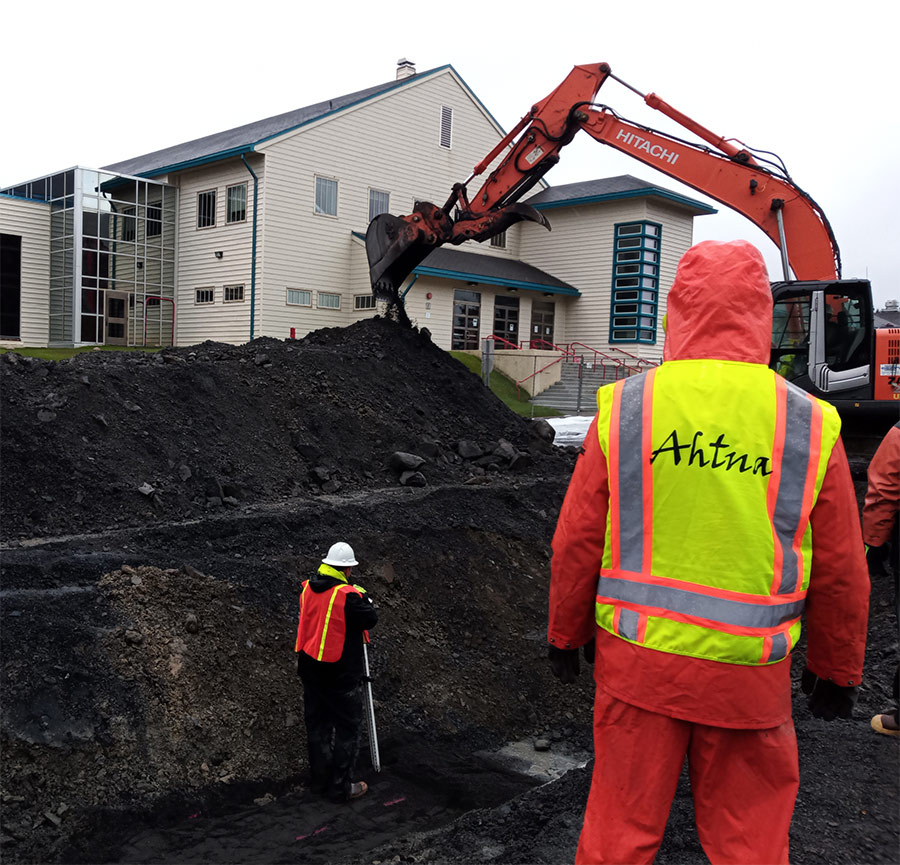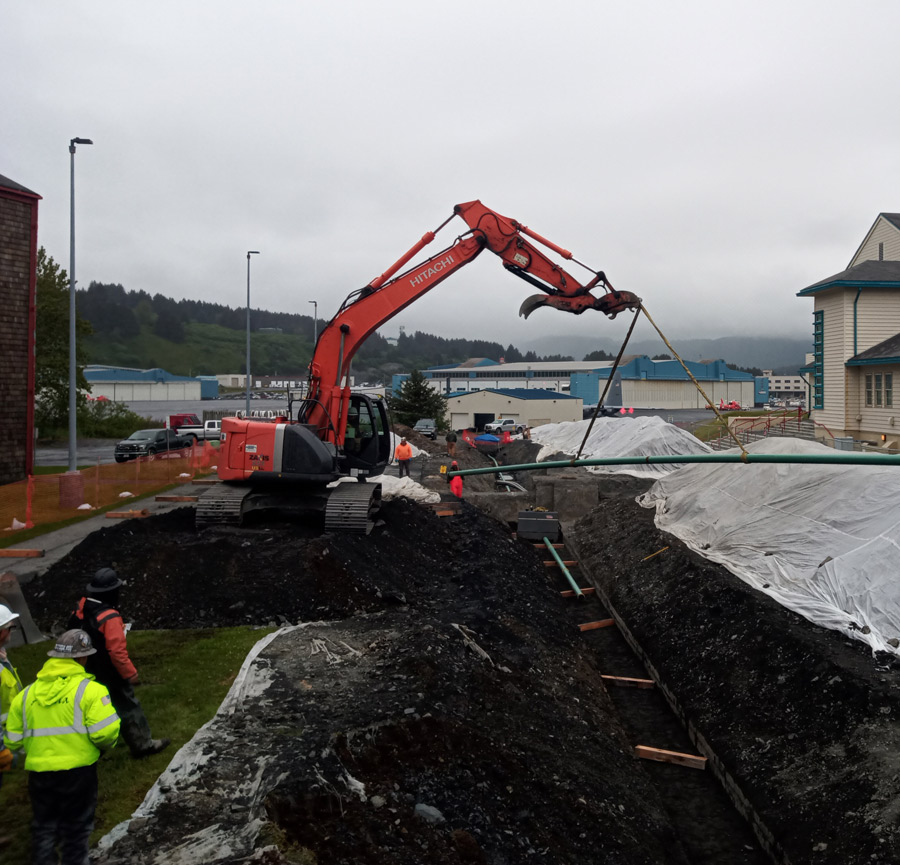
Update
ging infrastructure and environmental contamination are problems often found on America’s military bases. Many were established during or shortly after World War I, an era when available building materials were limited and the detrimental impacts of chemical and fuel leaks were largely unknown.
This is what Ahtna Environmental faced last summer at US Coast Guard Air Station Kodiak when they replaced 1,600 feet of existing jet fuel pipeline running between a valve at a long-shuttered laundry facility and a pump station. After decades of use, the original line had failed a pressure test in the 2000s, and while a temporary fix was applied at the time, plans were made for an upgrade.
The challenges were significant. “We had to make sure that the Coast Guard operations and lifesaving capabilities were still going,” says Lieutenant Dave Stiles, construction branch chief for the Coast Guard’s Civil Engineering Unit in Juneau. “That was all in the same contract. It was a logistical challenge to say the least,” adds Stiles, who oversaw the project.
It’s one Ahtna was uniquely suited to. Ahtna Environmental is a wholly-owned subsidiary of Ahtna, Inc., an Alaska Native regional corporation, and describes itself as “an established self-performing contractor that specializes in the execution of time-sensitive, complex, and multifaceted construction, environmental, engineering, and professional services projects for our clients.”
For Ahtna Environmental, replacing the underground fuel line was just part of the job. The line bisects the busiest road on base. Ahtna Environmental had to keep traffic flowing during the inevitable road closures. The company also had to truck fuel from the depot at Nyman Peninsula to the airstrip. And, as is common on older military facilities, things were found that were buried long ago and either poorly mapped or forgotten about.
“This base was built in World War II, so there were a lot of utilities in the ground. And some of them nobody even knew about until we dug into them,” says Richard Girouard, senior environmental program manager with Ahtna Global and the company’s Coast Guard program manager.
“Because this base has been around so long, it has a lot of legacy contaminated sites,” he says.




“It was a lot of prep work ahead of time,” says Andy DuComb, the Ahtna Environmental project engineer who directed operations onsite. “All last winter we were getting ready for it.”
The project demanded close coordination between Ahtna Environmental, its subcontractors, the Coast Guard, the Environmental Protection Agency, and Alaska’s Departments of Environmental Conservation and Transportation.
With so many moving parts, Stiles turned to a project management technique that he learned while working with the US Army Corps of Engineers, known as the three phases of control. The method begins with extensive discussions, followed by careful onsite preparation, and then daily monitoring of the work to verify that it meets requirements. Solid communications lie at the core of this approach, with the emphasis on open channels across all levels rather than top-down instructions. If conditions on the ground require changes in plans, plans get redrawn to accommodate them, again with participation from all levels.

When encountering such obstacles, DuComb says, “We put our heads together with the pipe welders and our equipment operators. Usually, it’s the best of a couple of bad options. We pick the best one.” DuComb says Ahtna presented ideas for resolutions that required approval from the Coast Guard.
DuComb credits Bering Industrial Contractors, the subcontractor that assembled the pipeline itself, with being flexible and highly skilled.
“Our plumbers employed certified pipe welders, and a subcontractor to them was an industrial x-ray company which inspected every weld on the project as part of the requirements of commissioning this new fuel line,” he says.
Bering Industrial was also involved in planning early on, as called for under Stiles’ management plan. “It took a lot of pre-planning and a lot of prefabbing and getting ready, so we’d minimally shut down the air station,” says Dustin Krug, Bering Industrial’s onsite general foreman for the job.
Contaminated soils created additional environmental permitting complexities. Decades ago, workers at the laundry facility at one end of the replacement job routinely dumped dry cleaning chemicals outside. While the impact of this was unknown at the time, today the site is sampled and monitored by the Coast Guard, with oversight by EPA. Samples of displaced soil had to be sent to testing labs. Fortunately for Ahtna Environmental, toxic chemical levels at all of the contaminated locations along the pathway were under the threshold that would have required soil removal and replacement.

“With the delivery trucks, that was probably the trickiest part because they need to access the loading dock of the commissary,” DuComb says.
Ahtna Environmental employed a traffic signaling contractor to design temporary traffic patterns while workers worked through that spot as quickly as possible between deliveries, then brought the road back up to grade for temporary access for delivery trucks only.
“That was our solution to keeping that grocery store stocked,” says DuComb.
Ahtna was also responsible for transporting fuel from the depot to the airstrip. Ten to fifteen deliveries of 4,000 gallons were made each week, and fuel trucks had to be on call at all hours in case of any sudden additional demand.
Despite the many complications, the job went well. Ground was broken in May, the new pipeline was activated in July, and by September the road was fully reopened. The old pipeline had been removed in some places and decommissioned, cleaned, and filled with concrete elsewhere.
“We ran across a lot of different site conditions, we were able to mitigate all of them, and we were able to get the entire project closed up in four months,” says Stiles.
“It was an interesting project and quite challenging,” DuComb says. “One of the reasons it went well is Rick (Girouard) and I have worked together for a number of years. But that’s just two of us. A whole bunch of people worked on this job.”